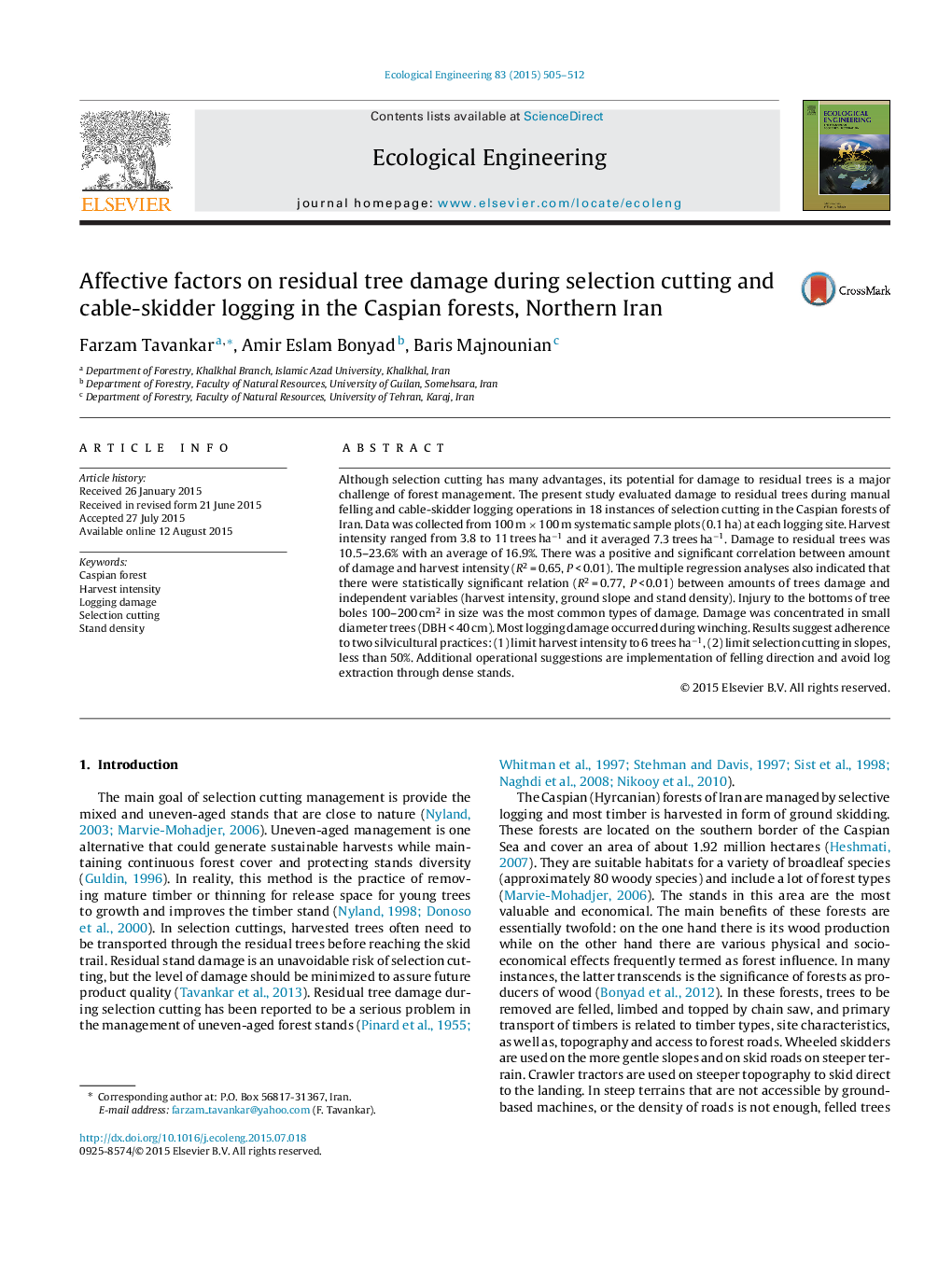| Article ID | Journal | Published Year | Pages | File Type |
|---|---|---|---|---|
| 4388902 | Ecological Engineering | 2015 | 8 Pages |
•Amount of damages was related with ground slope, stand density and harvest intensity.•Damage was concentrated in small diameter trees.•Most logging damage occurred during winching.•Damage to residual trees was 10.5–23.6% with an average of 16.9%.
Although selection cutting has many advantages, its potential for damage to residual trees is a major challenge of forest management. The present study evaluated damage to residual trees during manual felling and cable-skidder logging operations in 18 instances of selection cutting in the Caspian forests of Iran. Data was collected from 100 m × 100 m systematic sample plots (0.1 ha) at each logging site. Harvest intensity ranged from 3.8 to 11 trees ha−1 and it averaged 7.3 trees ha−1. Damage to residual trees was 10.5–23.6% with an average of 16.9%. There was a positive and significant correlation between amount of damage and harvest intensity (R2 = 0.65, P < 0.01). The multiple regression analyses also indicated that there were statistically significant relation (R2 = 0.77, P < 0.01) between amounts of trees damage and independent variables (harvest intensity, ground slope and stand density). Injury to the bottoms of tree boles 100–200 cm2 in size was the most common types of damage. Damage was concentrated in small diameter trees (DBH < 40 cm). Most logging damage occurred during winching. Results suggest adherence to two silvicultural practices: (1) limit harvest intensity to 6 trees ha−1, (2) limit selection cutting in slopes, less than 50%. Additional operational suggestions are implementation of felling direction and avoid log extraction through dense stands.
Graphical abstractFigure optionsDownload full-size imageDownload as PowerPoint slide
